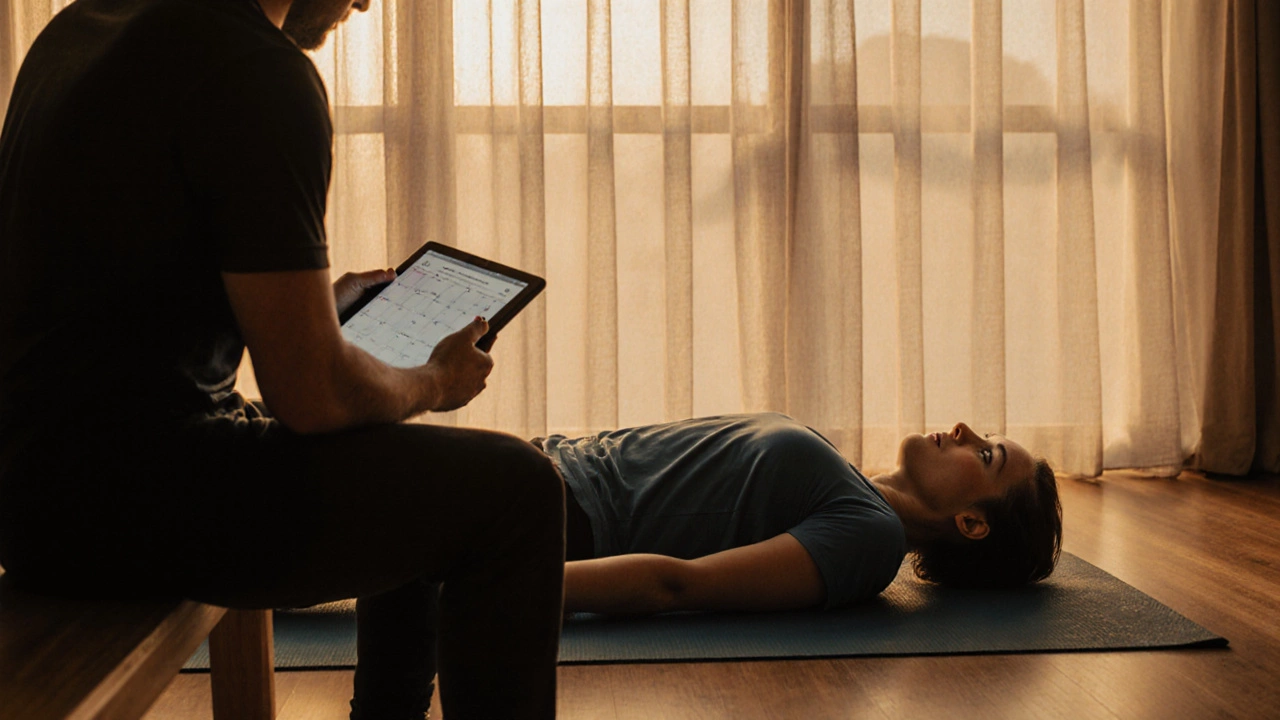How Often Should You Schedule Personal Training Sessions?

Personal Training Frequency Calculator
Find Your Ideal Training Schedule
Based on your goals, fitness level, and recovery ability. Recommendations align with ACSM guidelines.
Recommended Sessions
Important Safety Note
Listen to your body. If you experience persistent soreness, declining performance, or sleep disturbances, consider reducing frequency.
Custom Recommendations
- Training Schedule
- Active Recovery Days
- Periodization Tip
When you ask “how often should I have PT sessions?”, you’re really wondering how many personal training appointments fit your life and goals. Personal training is a one‑on‑one fitness service where a certified trainer designs, monitors, and adjusts workouts to match your needs. In simple terms, it’s a guided workout that helps you move faster toward the results you want. The answer isn’t a one‑size‑fits‑all number; it changes with your goals, schedule, recovery ability, and budget.
Quick Takeaways
- Most people benefit from 1‑3 personal training sessions per week.
- Strength‑focused goals usually need 2‑3 sessions, while general health can be met with 1‑2.
- Listen to your body: fatigue, prolonged soreness, or declining performance signal too many sessions.
- Use periodization - plan phases of higher and lower intensity - to avoid burnout.
- Combine trainer time with self‑guided workouts to maximize results without over‑booking.
Understanding Training Frequency
Training frequency simply means how many times you work out, or in this case, meet with a trainer, over a set period - usually a week. Researchers at the American College of Sports Medicine (ACSM) found that adapting to strength and endurance cues depends heavily on how often you stress the body and how well you recover. A common misconception is that more sessions equal faster gains, but without proper rest the nervous system and muscles can’t rebuild, leading to plateaus or injury.
That’s why many experts recommend a balanced approach: enough stimulus to trigger adaptation, but enough recovery to let those adaptations solidify. This balance is the core of personal training frequency planning.
Factors That Influence How Often You Should Train
Before setting a schedule, consider these five key drivers:
- Goal type: Are you aiming for strength, weight loss, sport‑specific performance, or general health? Each objective has an optimal session range.
- Fitness level: Beginners need more recovery time, while seasoned athletes can handle higher volume.
- Age and lifestyle: Older adults or people with demanding jobs may need extra rest days.
- Recovery capacity: Sleep quality, nutrition, and stress levels dictate how quickly you bounce back.
- Budget and availability: Personal training isn’t cheap, so you’ll want to get the most bang for your buck.

Common Goals and Recommended PT Sessions
| Goal | Typical Sessions per Week | Why This Works |
|---|---|---|
| Strength & Hypertrophy | 2‑3 | Provides enough overload while allowing muscle repair. |
| Weight Loss / Fat Burn | 1‑2 | Combines high‑intensity intervals with trainer guidance on nutrition. |
| Cardiovascular Health | 1‑2 | Focuses on moderate‑intensity cardio and movement patterns. |
| Sport‑Specific Skill | 2‑4 (shorter, focused sessions) | Targets technique while limiting overall fatigue. |
| General Well‑Being (beginners) | 1 | Introduces exercise safely and builds confidence. |
These numbers are guidelines, not commandments. Your trainer will tweak them based on how you respond.
Building a Personal Schedule That Works
Here’s a step‑by‑step recipe to craft a realistic weekly plan:
- Write down your primary goal (e.g., “increase bench press by 20 lb”).
- Assess how many days you can realistically dedicate to the gym - factor in work, family, and sleep.
- Pick a baseline frequency from the table above.
- Allocate non‑trainer days for active recovery: light jogging, yoga, or mobility drills.
- Schedule a “deload” week every 4‑6 weeks where you cut the trainer sessions by half.
- Review progress every 2‑3 weeks with your trainer and adjust frequency as needed.
Remember, consistency beats intensity when you’re juggling life’s demands. If you can reliably show up for one session a week, that’s more valuable than sporadic bursts of three‑day‑a‑week training that get canceled.

Signs You’re Doing Too Much
Even with a well‑planned schedule, your body will tell you when it’s overloaded. Keep an eye out for:
- Persistent muscle soreness lasting more than 72 hours.
- Declining performance - you’re lifting less, running slower, or feeling weaker.
- Sleep disturbances or increased resting heart rate.
- Elevated stress, irritability, or loss of motivation.
- Frequent injuries such as joint pain or tendonitis.
If you notice two or more of these, consider dropping a session for a week or swapping a heavy day for a mobility‑focused one. Your trainer can redesign the program using the concept of periodization - alternating high‑intensity weeks with lighter recovery weeks.
FAQs
How many personal training sessions are ideal for a beginner?
For most newcomers, one session per week is enough to learn proper technique, build confidence, and set a habit. The trainer can assign home workouts for the other days.
Can I combine PT sessions with my own gym routine?
Absolutely. In fact, many clients do a trainer‑led session 1‑2 times a week and fill the rest of the week with self‑directed cardio or accessory work. This maximizes the value of professional guidance while keeping total volume manageable.
What if I can only train once a month due to travel?
A monthly session can still be effective if you stay consistent with a personalized program your trainer gives you to follow on the road. Use bodyweight circuits, resistance bands, or hotel gyms to keep the stimulus alive between visits.
Is there a risk of overtraining with three weekly sessions?
Three sessions can be safe if you space them out (e.g., Monday, Wednesday, Friday) and incorporate active recovery on off days. The key is monitoring fatigue markers - if you’re consistently sore or sluggish, dial back intensity or volume.
How do I decide between a one‑hour and a 45‑minute session?
Longer sessions allow more comprehensive programming, especially for complex goals like full‑body strength cycles. If time is limited, a 45‑minute focused block (e.g., push‑pull split) can still be highly effective when paired with a clear plan.
Finding the sweet spot for your personal training cadence takes a bit of trial and error, but once you hit it, progress becomes steady and enjoyable. Keep the conversation open with your trainer, listen to your body, and adjust as life changes - that’s the real formula for lasting fitness.